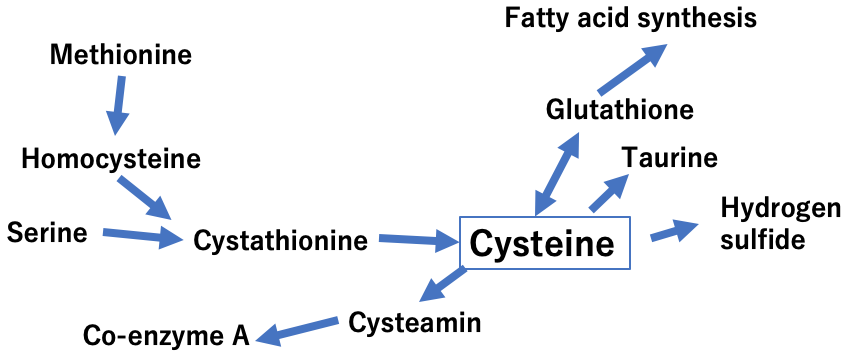
Will excluding cysteine, an amino acid, from your diet lead to weight loss?
Twenty types of amino acids are essential components for making proteins. There are nine types of amino acids called essential amino acids that humans cannot make in their own bodies and must ingest from food. These are isoleucine, leucine, lysine, methionine, phenylalanine, threonine, tryptophan, valine, and histidine. The diet also contains eleven other non-essential amino acids, each of which is produced in the body by conversion from other substances in the body. Although these do not need to be consumed in the diet, they are essential for protein synthesis, and these non-essential amino acids are also important as intermediates for producing other substances in the body. One of these is cysteine. How important is cysteine? An interesting study that answers this question was recently published, showing that it is deeply related to our weight. (Unravelling cysteine-deficiency associated weight loss, Alan Varghese et al. (2025) Nature, May issue).
Cysteine is produced in cells from methionine. In a study by Alan Varghese et al., they artificially altered the genes of mice to block the pathway for cysteine synthesis in the body, and artificially created mice that could only ingest cysteine through food. They then fed these mice a cysteine-free diet, which resulted in a 30% weight loss in one week. Cysteine is essential for protein synthesis, so under these conditions protein synthesis is reduced and weight loss occurs. For comparison, they fed mice a diet lacking nine essential amino acids and compared the weight loss to that of cysteine. Cysteine caused a 30% weight loss within seven days of the experimental conditions. However, with other essential amino acids, the weight loss was only 10% to at most 20%. Restricting cysteine leads to a greater weight loss. The problem of overweight (obesity) in humans is serious, but it may be possible to open a way to lose weight by limiting cysteine intake.
So, why is cysteine related to weight? This paper investigates this issue in detail, so we would like to introduce some of the results. Cysteine and the very similar cystine contain sulfur (S) in their molecules. Some metabolites in the body contain S, and cysteine is an essential material for producing them. Hydrogen is also bound to S. This hydrogen is passed to other substances in the cell and reduces those substances. Humans take in oxygen, oxidize the sugar they take in, and trap the energy released in ATP molecules. If this oxidizing power is not well controlled, it will over-oxidize and destroy substances in the body. Therefore, reducing power is needed to counteract the oxidizing power. In human cells, reducing power is stored in glutathione made from cysteine, and is used when needed. Cysteine is needed to make this glutathione. Note that if too much cysteine is added to cultured cells, the cells will die, so excessive reducing power is also dangerous to cells. Also, since the reducing power of glutathione is weaker than that of cysteine, it makes sense to store reducing power in glutathione. Furthermore, it is already known that the reducing power of glutathione is needed to stably produce fatty acids, which are the source of fat, in cells. Cysteine is found in large amounts in meat (especially liver), fish, eggs, and vegetables such as garlic, onions, broccoli, and Brussels sprouts. It is also found in large amounts in soy products, seaweed, salmon roe, sesame, chicken, and pork.

Fig. Metabolic pathways surrounding Cysteine

In a study by Varghese et al., they used cells from mice that had been genetically engineered to be unable to synthesize cysteine in their bodies, and found that removing cysteine from the diet reduced the amount of fat in fat cells that store fat. It was known at the cellular level that glutathione is necessary for the synthesis of fatty acids, but Varghese et al.’s latest study was the first to reveal that it leads to weight loss. Cysteine is also essential for the synthesis of coenzyme A (CoA), a type of vitamin. This substance is necessary when ATP, an energy source, is produced from sugars taken into cells, and is essential for mitochondria to function. Therefore, when the amount of cysteine decreases, coenzyme A decreases and mitochondrial activity decreases. As a result, ATP decreases, protein synthesis decreases, and it is thought that this leads to weight loss.
Fig. Chemical structure of Co-enzyme A.
The importance of the complex intracellular metabolic pathway surrounding cysteine has been made clear by the current research by Dr. Varghese and his colleagues. Although this research may not immediately provide a new way to reduce cysteine intake and eliminate obesity, it does provide a renewed sense of the profound depth of the mechanisms of life.
